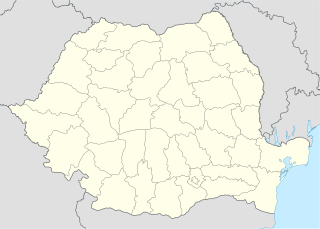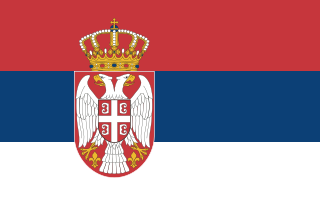
Driebergen is a former village and municipality in the Dutch province of Utrecht. It is first mentioned as Thriberghen in 1159. The former municipality of Driebergen existed until 1931, when it merged with Rijsenburg, to create the new municipality of Driebergen-Rijsenburg. In later years, due to growth of the villages of Driebergen and Rijsenburg, the villages themselves also merged, to become the single town of Driebergen-Rijsenburg. Since 2006, Driebergen-Rijsenburg is part of the new municipality Utrechtse Heuvelrug.

Mala Bosna is a village located in the Subotica municipality, in the North Bačka District of Serbia. It is situated in the autonomous province of Vojvodina. The village is ethnically mixed and its population numbering 1,245 people.
Rebu is a village in Lüganuse Parish, Ida-Viru County in northeastern Estonia.

Barra Longa is a Brazilian municipality located in the state of Minas Gerais. Its population as of 2006 is estimated to be 6,558 people living in a total area of 386.101 km². The city belongs to the mesoregion of Zona da Mata and to the microregion of Ponte Nova.

Stejanovci is a village in Serbia. It is situated in the Ruma municipality, in the Srem District, Vojvodina province. The village has a Serb ethnic majority and its population numbering 1,020 people.

Șagu is a commune in Arad County, Romania, is situated on the Vingăi Plateau and it stretches over 10266 hectares. It is composed of five villages: Cruceni, Firiteaz (Féregyház), Fiscut (Temesfűzkút), Hunedoara Timișană and Șagu.

Daneți is a commune in Dolj County, Romania with a population of 7,211 people. It is composed of four villages: Brabeți, Braniște, Daneți and Locusteni.

Urzica is a commune in Olt County, Romania. It is composed of two villages, Stăvaru and Urzica.

Bogurzyn is a village in the administrative district of Gmina Wiśniewo, within Mława County, Masovian Voivodeship, in east-central Poland. It lies approximately 10 kilometres (6 mi) south-west of Mława and 105 km (65 mi) north-west of Warsaw.

Duškovci is a village in the municipality of Požega, western Serbia. According to the 2002 census, the village has a population of 369 people.

Buđevo is a village in the municipality of Sjenica, Serbia. According to the 2002 census, the village has a population of 91 people.

Ugao is a village in the municipality of Sjenica, Serbia. According to the 2002 census, the village has a population of 545 people.

Jablanica is a village in the municipality of Tutin, Serbia. According to the 2002 census, the village has a population of 85 people.

Koniče is a village in the municipality of Tutin, Serbia. According to the 2002 census, the village has a population of 322 people.

Leskova is a village in the municipality of Tutin, Serbia. According to the 2002 census, the village has a population of 335 people.

Šaronje is a village in the municipality of Tutin, Serbia. According to the 2002 census, the village has a population of 231 people.

Kovači is a village in the municipality of Raška, Serbia. According to the 2002 census, the village has a population of 283 people.

Sebimilje is a village in the municipality of Raška, Serbia. According to the 2002 census, the village has a population of 126 people.

Tiodže is a village in the municipality of Raška, Serbia. According to the 2002 census, the village has a population of 158 people.

Trnava is a village in the municipality of Raška, Serbia. According to the 2002 census, the village has a population of 259 people.











